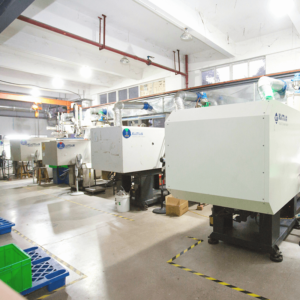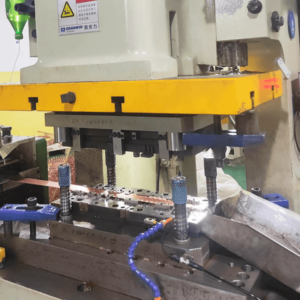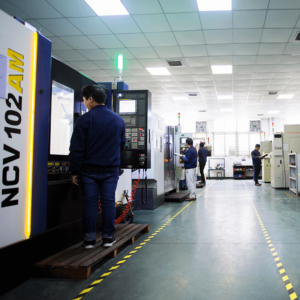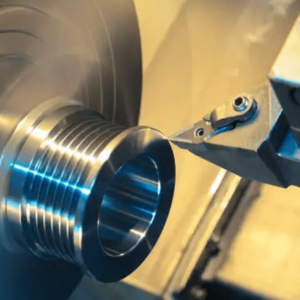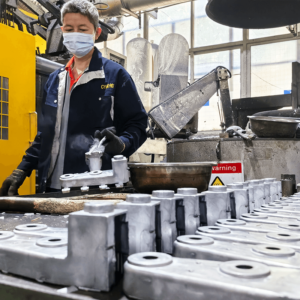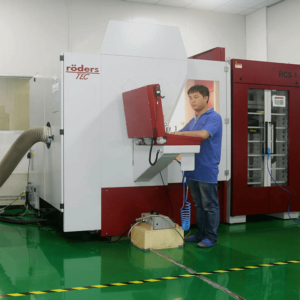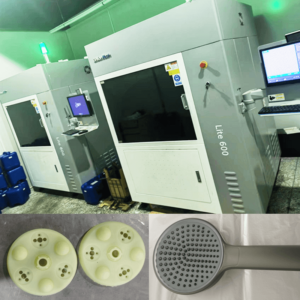What Is Post-Molding Processing?
Post-molding processing encompasses a spectrum of procedures and operations undertaken subsequent to the molding of a product, with the primary aim of converting the initial molded components into the ultimate finished product. This pivotal phase in the manufacturing process holds profound significance in shaping the quality, functionality, and aesthetic attributes of the final product.
ThesunIndustry Value-Added Secondary Processes of Plastic and LSR Parts
We understand the importance of post-molding processes for plastic and silicone parts to ensure optimal quality, functionality, and aesthetics. Our total systems approach extends beyond just the molding stage, and we place great emphasis on streamlining and optimizing post-molding requirements to add maximum value for our customers.
Automation is a key aspect of our post-molding strategy. After parts are removed from the mold, our experienced team leverages automated systems to perform various operations promptly. This approach not only reduces manual labor and associated costs but also ensures a high level of efficiency and consistency in the production process.
Custom-designed fixtures play a crucial role in the automation process. These fixtures are tailored to the specific requirements of each part, allowing us to align and secure them with precision accuracy. By using fixtures, we can eliminate variations in part positioning, reducing the chances of defects and achieving consistent results for every produced unit.
We offer the post-molding processing of laser engraving, laser marking, printing, painting of plastic parts, and silicone oil coating and spraying services. Our systematic approach meets various product appearance needs and allows us to optimize processes and add value for our customers. We're currently exploring automation options for post-molding operations to deliver cost-effective solutions for your projects.
Key Operations
For Plastic and Silicone Post-molding Processes, Some of the Key Operations We focus on:
Trimming and De-flashing: We use automated trimming and de-flashing processes to remove excess material or flash around the edges of the molded parts. This step helps in achieving the desired final shape and improves the overall aesthetics.
Inspection and Quality Control: Our automated inspection systems ensure that each part meets the required quality standards. Defective parts are promptly identified and sorted out, minimizing waste and ensuring that only top-quality components reach the customers.
Assembly: In cases where multiple plastic or silicone parts need to be combined to create a final product, we employ automated assembly systems. These systems ensure precise fitting and alignment, reducing assembly time and errors.
Surface Finishing: Post-molding, we also automate surface finishing processes such as polishing, painting, or applying coatings. This enhances the appearance and functionality of the parts as per the customer's specifications.
Packaging: Our automation extends to packaging as well, where we use automated systems to sort, package, and prepare the finished parts for shipment. This step streamlines the logistics process and ensures that products reach customers securely and in an organized manner.
Post-molding Processing for Silicone Parts
Post Curing: it is a process that occurs after molding LSR and silicone parts. It creates strong molecular bonds within the material, improving compression set and reducing gas volatility. To accelerate curing, a post-curing method involving an oven, typically heated to 200°, is used. This ensures efficient and effective production of high-quality parts.
Silicone Oil Coating:
It enhances the surface smoothness, providing a delicate feel and eliminating any astringent sensation after molding.
The oil adds friction resistance and wear resistance, prolonging the service life of the silicone products
By reducing static electricity, it helps prevent dust absorption during the rubber refining and forming processes.
Various surface effects of hand oil are available, such as frosted, mist, or glossy finishes. Customers can choose from common or high wear resistance types, as well as high or low-temperature curing options, depending on their product needs.
When applying hand oil, it is crucial to maintain an appropriate environment, preferably dust-free, with controlled temperature (20 ~ 30℃) and humidity (55 ~ 75%). These measures ensure proper leveling, adhesion, and film quality, avoiding potential issues like shrinkage, electrostatic dust pollution, and safety risks.
Screen printing
Silicone products are versatile but require various processing steps to become finished goods. Screen printing is a crucial process for many silicone products as it offers several advantages. It ensures clear and durable printing with good flow and viscosity, maintaining stability in high and low temperatures and resisting aging. Screen printing enhances the product's appearance with three-dimensional patterns and a pleasing texture. It also provides excellent peel strength, wear resistance, and brightness, contributing to improved performance and aesthetics of the final silicone products.
Laser engraving
Laser engraving is a highly versatile and efficient surface treatment process used for marking words or patterns on various materials. Compared to traditional methods like screen printing and pad printing, laser engraving offers numerous advantages, such as high-speed marking, beautiful images with high resolution, wear-resistant results, wide application range, safety, reliability, and consistent effects. It can be divided into dot matrix engraving and vector cutting methods.
In recent years, laser engraving technology has gained popularity in the printing field due to its ability to work with diverse materials like plastic, rubber, metal, and silicon wafers. It outperforms traditional methods like mechanical engraving and chemical etching by offering low operating costs, superior flexibility, precise control, easy operation, and permanent markings.
Post-molding Processing for Plastic Parts
Post-processing Options for Injection Molding Parts
After completing your custom plastic injection molding project, consider taking additional steps to enhance your plastic parts. We offer in-house capabilities for post-mold treatments and assembly operations, and we collaborate with strategic vendor partners for decorative services. Explore a wide range of finishing options that can improve part strength, enhance aesthetics, provide customization, and offer other valuable benefits for your molded products.
Popular Post-processing Options for Injection Molding:
- Decoration Methods
- Mold-Tech textures
- plastic spraying
- Pad printing
- Silk Screening
- Plating
- UV spray
- Laser engraving
Mold-tech Textures: Mold-Tech offers a wide range of texturing options for molds, including chemical bath etching, hand engraving, and laser engraving. With over 500,000 texture designs and the ability to support new ones, Mold-Tech is the industry's go-to for textures. You can easily request a Mold-Tech finish, such as sand, satin, leather, wood grain, or any other, and specify the desired texture for your molds.
Plastic Spraying
The issue of paint falling off plastic shells can be addressed by improving the adhesion between the paint and the substrate. Using a suitable adhesion treatment agent as a bottom coat helps enhance the polarity and wetting force of the plastic shell's surface. This process promotes chemical bonding between the paint film and the substrate, ensuring a strong and durable attachment. By adopting this method, the problem of paint peeling off the plastic shell can be effectively resolved, achieving a reliable adhesion level of 5B in adhesion tests.
Pad Printing
Pad printing is essential in the surface processing of plastic parts. It is a cost-effective and efficient printing technique used to apply text, images, and colors to products with round, concave, recessed, or raised areas. This versatile method allows for precise printing on complex surfaces, including cylinders, curved objects, spheres, intricate angles, and highly textured surfaces. With its flexibility, pad printing offers a wide range of design possibilities for the plastic manufacturing industry and helps achieve outstanding finished results.
Silk Screening
In the surface processing of plastic parts, silk screening is a very common printing technique used to add images, text, logos, and other details to components. Silk screening offers great value for high-volume production, and the process itself is extremely durable and reusable. The silk screening process allows for unlimited creativity, fine detail, and incredible customization.
Plating
Plating is a surface coating process that involves adding a layer of metal to a product, enhancing plastic reflectivity, and giving it a metallic appearance..
UV Spray
UV curing coatings, unlike traditional PU, PE, and NC coatings, are named after their curing method. These coatings rapidly form a film within seconds under ultraviolet (UV) irradiation. UV paint is considered a green and environmentally friendly option as it contains no volatile substances. Its three-dimensional structure provides high hardness, excellent wear resistance, and transparency. It ensures products have enhanced durability against friction and the test of time. UV paint also minimizes color differences and ensures stable quality due to reduced manual factors. In the production process, harmful substances in the plate are decomposed, making the final product healthier and more environmentally friendly when treated with a UV curing machine.
Laser Engraving
Laser engraving technology has been increasingly used in the printing field in recent years, and can be applied to a variety of materials, including plastic and rubber, metal, silicon wafer and so on. Compared with traditional engraving and printing methods, laser engraving technology has low operation cost, high flexibility, accurate control, easy operation, permanent marking and other outstanding features.
Treatment of Post Molded Parts
Post mold part treatments are done to a product following a custom plastic injection molding project to improve the plastics’ or product’s performance or quality.
- Plastic Annealing
The process of heating or chemically treating a plastic product to relieve internal stresses and prevent dimensional shifts. - Moisture Conditioning Hygroscopic plastics can become brittle after molding due to moisture absorption. Moisture conditioning rehydrates the plastic parts, restoring toughness and reducing stiffness.
- Fixturing Heavy-weighted or thick plastic products tend to retain excess heat during injection molding, leading to long cycle times or dimensional warping. To prevent this, storing the plastic parts in a fixture after molding allows them to cool off while maintaining their shape.
Assembly Methods
- Heat Stake Inserts The process begins by heating metal threaded inserts to bond to already molded parts, then using the heat to quickly melt the surrounding plastic and push the threaded insert into place. Heated inserts eliminate the need for small consumables such as rivets and screws, streamlining the process.
- Solvent and Adhesive Bonding Solvent bonding softens plastics by using a solvent and pressing them together to form one part. Adhesive bonding involves applying a chemical to join two parts. Both methods require consumables but have a low initial investment. Ongoing maintenance of applicators is needed, but they offer process flexibility and work well with various materials and applications.
- Ultrasonic Welding Ultrasonic welding is a fast and efficient process that uses sonic pulses transmitted by a vibrating tool (horn) to fuse two plastic parts together. The vibrations generate heat, causing the plastics to bond. This method allows for joining different resin families with compatible compositions and melting temperatures within a 30°F range. It offers quick cycle times, and a single station can achieve assembly rates of over 25 parts per minute.
- Mechanical Assembly Rather than welding parts together, mechanical assembly combines two components to form a customized assembly.
Finish Your Injection Molding Jobs with ThesunIndustry
We offers a wide range of surface finishes for injection molding, including SPI standard options for surface roughness and aesthetic finishes like texturing, color matching, and design transfer. We also provide post-processing services such as part joining, increasing durability, painting, light assembly, and protective packaging.
Our goal is to help you create injection-molded parts that are not only functional and durable but also visually impressive. With our expert manufacturers guiding you through the process, you can add exceptional final touches to your project. Contact us today to learn more about our injection molding services and discuss your specific requirements.


